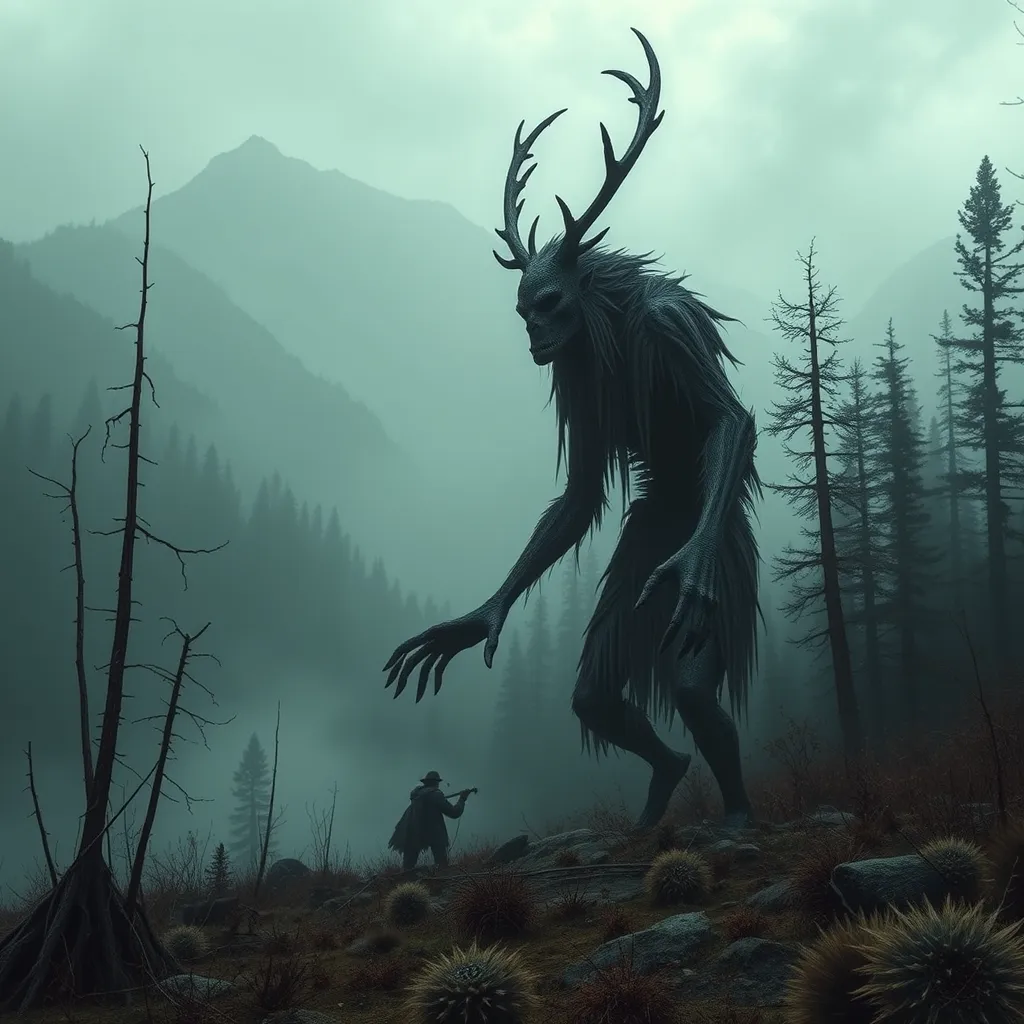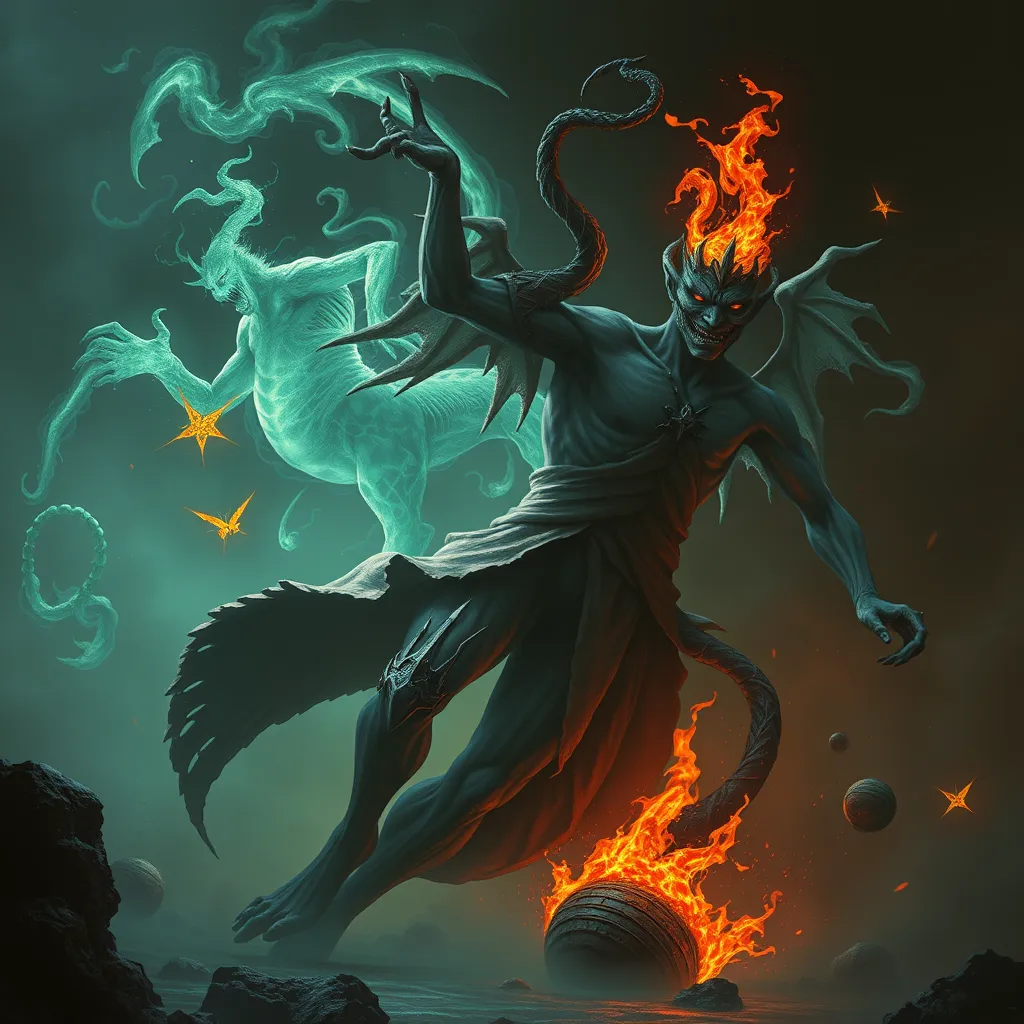The Wendigo and the Changing Landscape: How This Myth Reflects the Impact of Colonization
I. Introduction
The Wendigo is a creature deeply embedded in the folklore of various Indigenous cultures in North America, often depicted as a malevolent, cannibalistic spirit associated with winter, hunger, and greed. This myth serves not only as a cautionary tale but also as a reflection of the profound changes faced by Indigenous communities, particularly in the context of colonization.
Examining myths like the Wendigo is crucial for understanding the impact of colonization on Indigenous peoples, as these stories encapsulate cultural values, historical experiences, and the psychological scars left by colonial violence. This article aims to explore the origins, characteristics, and contemporary relevance of the Wendigo myth, alongside its reflection of the broader impacts of colonization on Indigenous cultures.
II. The Wendigo Myth: Origins and Characteristics
A. Historical roots in Indigenous cultures of North America
The Wendigo myth has origins in the Algonquian-speaking tribes of North America, notably among the Ojibwe, Cree, and Innu peoples. Traditionally, the Wendigo is described as a spirit that embodies gluttony and excess, often associated with the harshness of winter and the desperation of hunger.
B. Symbolism and characteristics of the Wendigo
Symbolically, the Wendigo represents a variety of themes, including:
- Greed and consumption
- Isolation and desperation
- The consequences of violating social and moral codes
Physically, the Wendigo is often depicted as a gaunt figure, emaciated and towering, with an insatiable hunger that drives it to consume human flesh.
C. Variations of the myth across different tribes
While the core characteristics of the Wendigo are consistent, there are numerous variations of the myth across different Indigenous tribes. Some tribes view the Wendigo as a tangible being, while others interpret it as a psychological condition that manifests in individuals driven to cannibalism. These variations reflect the diverse cultural contexts in which the Wendigo myth exists.
III. The Impact of Colonization on Indigenous Peoples
A. Overview of colonization in North America
The colonization of North America brought profound changes to Indigenous societies. European settlers imposed new governance structures, land ownership concepts, and economic systems that disrupted traditional ways of life.
B. Disruption of traditional ways of life and cultures
Colonization led to the displacement of Indigenous peoples, loss of land, and the erosion of cultural practices. These disruptions often resulted in the disintegration of community bonds and traditional knowledge systems.
C. Introduction of new social and economic pressures
The introduction of European goods, trade practices, and economic systems created new social hierarchies and dependencies. Indigenous peoples faced increased competition for resources and were often forced into exploitative arrangements that further marginalized their communities.
IV. The Wendigo as a Reflection of Cultural Trauma
A. The Wendigo as a metaphor for greed and excess
The Wendigo myth can be understood as a metaphor for the greed and excess that accompanied colonization. As Indigenous peoples witnessed the exploitation of their lands and resources, the Wendigo became a symbol of the destructive nature of unchecked consumption.
B. Connection between the myth and the experiences of Indigenous peoples
The Wendigo embodies the trauma experienced by Indigenous communities in the wake of colonization. It reflects the fear of losing one’s humanity in the face of insatiable greed and the destructive forces of colonialism.
C. The psychological impact of colonization and cultural loss
The psychological scars left by colonization can be seen in the Wendigo myth, as it illustrates the internal conflicts that arise when cultural identity is threatened. The loss of traditional practices and the imposition of foreign values can lead to feelings of despair and disconnection.
V. Environmental Changes and the Wendigo Myth
A. How colonization altered landscapes and ecosystems
Colonization dramatically altered the landscapes and ecosystems of North America. Deforestation, resource extraction, and the introduction of non-native species disrupted the delicate balance of Indigenous environments.
B. The Wendigo as a symbol of the consequences of ecological disruption
The Wendigo can be seen as a symbol of the ecological disruption wrought by colonization, representing the consequences of human greed on the environment. As natural resources were exploited, the Wendigo serves as a reminder of the need for balance and respect for nature.
C. Relationship between Indigenous practices and environmental stewardship
Indigenous cultures have long practiced sustainable environmental stewardship, maintaining a reciprocal relationship with the land. The Wendigo myth highlights the importance of these practices and the dangers of neglecting them in favor of exploitative behavior.
VI. Contemporary Interpretations of the Wendigo
A. The revival of Indigenous storytelling and cultural practices
In recent years, there has been a resurgence in Indigenous storytelling and cultural practices, with the Wendigo myth being revitalized as a means of cultural expression and identity. Indigenous artists and storytellers are reclaiming these narratives to assert their cultural heritage.
B. Modern adaptations of the Wendigo myth in literature and media
The Wendigo has found its way into contemporary literature, film, and art, often reinterpreted to address current social issues such as environmental degradation, mental health, and the impacts of colonization. These adaptations resonate with both Indigenous and non-Indigenous audiences.
C. The Wendigo as a lens for understanding current social issues
By examining the Wendigo myth through a contemporary lens, we can understand it as a reflection of ongoing social issues, including the consequences of consumerism, environmental destruction, and the struggle for Indigenous rights.
VII. The Role of the Wendigo in Indigenous Resilience
A. The myth as a tool for cultural preservation and identity
The Wendigo myth serves as a tool for cultural preservation, enabling Indigenous communities to maintain their identity and traditions in the face of ongoing challenges posed by colonization and modernity.
B. The Wendigo in contemporary Indigenous activism
As Indigenous peoples continue to advocate for their rights and sovereignty, the Wendigo myth has been invoked in various forms of activism, emphasizing the need to address the historical and ongoing injustices faced by Indigenous communities.
C. Lessons learned from the Wendigo in the face of ongoing challenges
The lessons embedded in the Wendigo myth encourage reflection on the values of community, sustainability, and respect for the natural world. These lessons are vital as Indigenous peoples navigate the complexities of modern life and strive for resilience.
VIII. Conclusion
In summary, the Wendigo myth serves as a multifaceted narrative reflecting the impacts of colonization on Indigenous peoples, their cultures, and the environment. By understanding the Wendigo in its historical and contemporary contexts, we gain insight into the resilience of Indigenous communities and the importance of their narratives in the ongoing struggle for cultural preservation and social justice.
It is essential to recognize and respect Indigenous stories and their significance in the broader context of history and culture. As we continue to explore these narratives, we open ourselves to a deeper understanding of the interconnections between culture, identity, and the environment.
We encourage further exploration and respect for Indigenous narratives, as these stories hold the wisdom and lessons necessary for addressing the challenges of our contemporary world.



